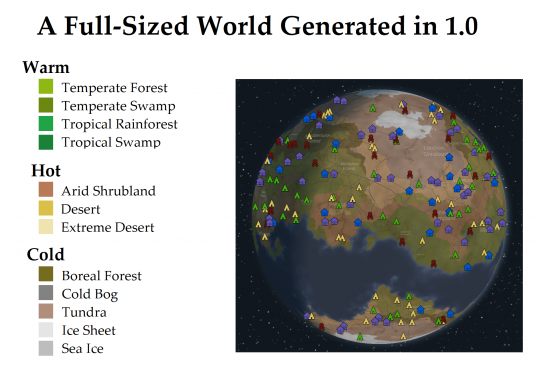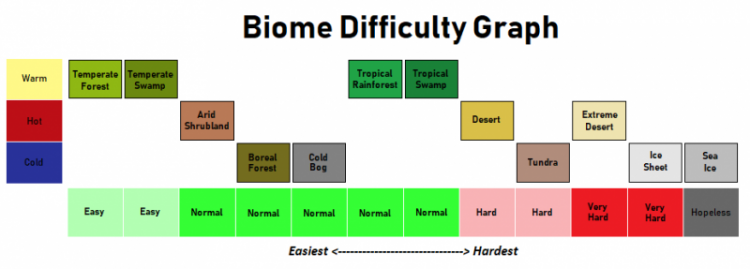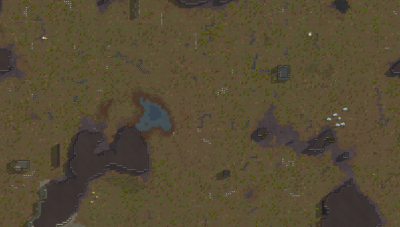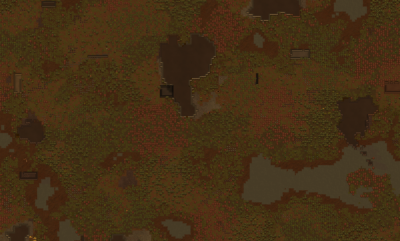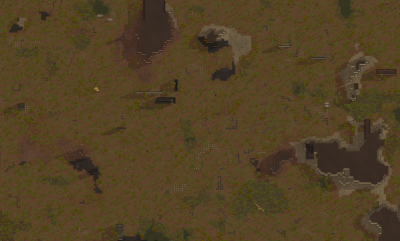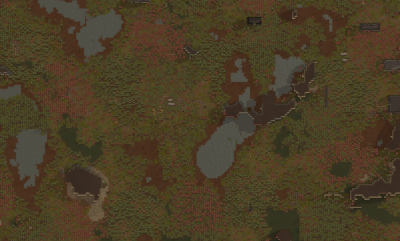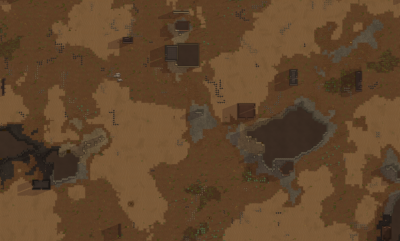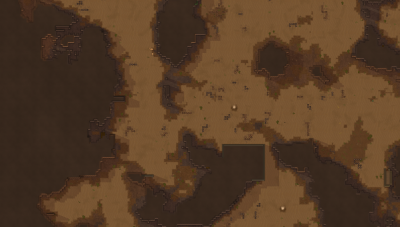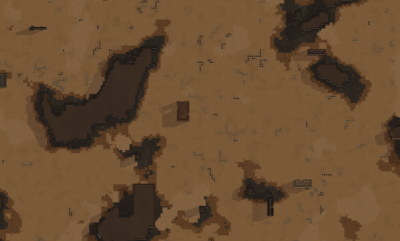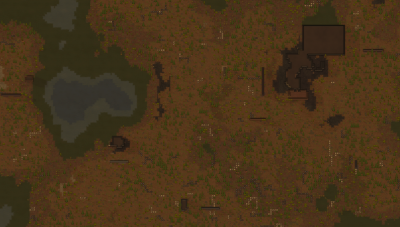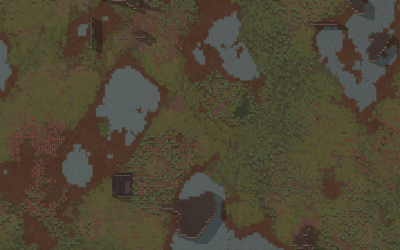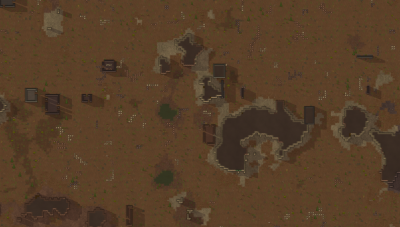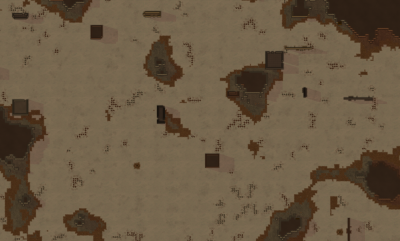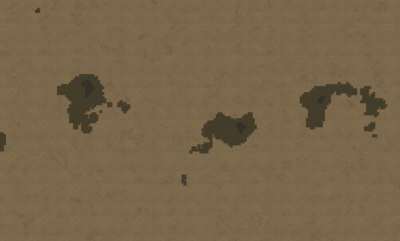Difference between revisions of "Biomes"
(Recoded Flora and Fauna lists as requested. Moved images to the right. Page isn't transcluded) |
|||
| (16 intermediate revisions by 8 users not shown) | |||
| Line 1: | Line 1: | ||
| − | |||
<!--Top Nav Box--> | <!--Top Nav Box--> | ||
{| align=center | {| align=center | ||
| Line 6: | Line 5: | ||
---- | ---- | ||
<!-- End of Nav --> | <!-- End of Nav --> | ||
| − | + | {{Rewrite|reason=Verification needed. At least a couple of the growing periods for the biomes are wrong, though their exact ranges are unknown.}} | |
<div style="float:right; clear:{{{clear|right}}}; margin-bottom:.5em; padding:.5em 0 .8em 1.4em; background:transparent; max-width:20em;" class="toclimit-3">__TOC__</div> | <div style="float:right; clear:{{{clear|right}}}; margin-bottom:.5em; padding:.5em 0 .8em 1.4em; background:transparent; max-width:20em;" class="toclimit-3">__TOC__</div> | ||
| − | |||
| − | |||
| − | + | '''Biomes''' are types of area on a planet, characterized by their terrain properties, [[Weather|climate]], [[Plants|flora]] and [[Animals|fauna]], [[disease]]s and special challenges. Each world tile has one particular biome. There are twelve playable biomes types in RimWorld, which can be divided into three categories: Warm, Hot and Cold. Oceans and lakes appear as world tiles but are not playable biomes. | |
| − | |||
| − | There are twelve playable biomes types in RimWorld, which can be divided into three categories: Warm, Hot and Cold. | ||
<div>[[File:World overview.png|550px|World Map]]</div> | <div>[[File:World overview.png|550px|World Map]]</div> | ||
| Line 20: | Line 15: | ||
[[File:BiomeIntensityDiagram.png|750px|Biome Intensity Diagram]] | [[File:BiomeIntensityDiagram.png|750px|Biome Intensity Diagram]] | ||
| − | + | ||
| − | ==Warm | + | == Warm biomes == |
These biomes are rich in flora and fauna, and also have a slightly elevated rate of disease. They generally have year-round growing periods, or longer growing periods at the very least. Traveling speed is fast in normal forests and average in dense forests but slow in marshes and during cold seasons if they have one. | These biomes are rich in flora and fauna, and also have a slightly elevated rate of disease. They generally have year-round growing periods, or longer growing periods at the very least. Traveling speed is fast in normal forests and average in dense forests but slow in marshes and during cold seasons if they have one. | ||
| − | ===Temperate forest=== | + | === Temperate forest === |
Forests of deciduous trees interspersed with fertile clearings. Many species of animals move around among the trees and on the plains. | Forests of deciduous trees interspersed with fertile clearings. Many species of animals move around among the trees and on the plains. | ||
| − | ====Growing | + | [[File:TemperateForest.png|400px|thumb|right|Temperate Forest]] |
| + | |||
| + | ==== Growing season, temperature, travel and disease ==== | ||
* Growing Season: From all year to 20/60 days. | * Growing Season: From all year to 20/60 days. | ||
* Average Temperature: {{Temperature|25}} to {{Temperature|0}}. | * Average Temperature: {{Temperature|25}} to {{Temperature|0}}. | ||
| Line 37: | Line 34: | ||
* Disease frequency: 1.2 per year. | * Disease frequency: 1.2 per year. | ||
| − | ====Flora==== | + | ==== Flora ==== |
| − | + | {{#ask: [[Type::Plant]] [[Lives In Temperate Forest::true]] | |
| − | [[ | + | | format = template |
| + | | template = DLC Icons | ||
| + | | link = none | ||
| + | | sep = , | ||
| + | | sort = From DLC, Name | ||
| + | | default = None. | ||
| + | }} | ||
| − | ====Fauna==== | + | ==== Fauna ==== |
| + | {{#ask: [[Type::Animal]] [[Lives In Temperate Forest::true]] | ||
| + | | format = template | ||
| + | | template = DLC Icons | ||
| + | | link = none | ||
| + | | sep = , | ||
| + | | sort = From DLC, Name | ||
| + | | default = None. | ||
| + | }} | ||
| − | |||
| − | |||
| − | |||
---- | ---- | ||
| − | ===Temperate swamp=== | + | === Temperate swamp === |
Wetlands choked with vegetation and disease. Dense overgrowth makes it hard to move around, and clearing areas for building takes a long time. Much of the terrain is too marshy to support heavy structures. | Wetlands choked with vegetation and disease. Dense overgrowth makes it hard to move around, and clearing areas for building takes a long time. Much of the terrain is too marshy to support heavy structures. | ||
| − | A more wet version of the Temperate Forest. Like in all swamps, diseases are more common. The marshy soil will probably require [[bridge]]s before constructing buildings and the terrain is really slow to travel, but this biome also has more fertile soil. | + | A more wet version of the Temperate Forest. Like in all swamps, diseases are more common. The marshy soil will probably require [[bridge]]s before constructing buildings and the terrain is really slow to travel, but this biome also has more fertile soil. |
| − | ====Growing | + | [[File:TemperateSwamp.png|400px|thumb|right|Temperate Swamp]] |
| + | |||
| + | ==== Growing season, temperature, travel and disease ==== | ||
* Growing Season: From all year to 20/60 days. | * Growing Season: From all year to 20/60 days. | ||
* Average Temperature: {{Temperature|25}} to {{Temperature|0}}. | * Average Temperature: {{Temperature|25}} to {{Temperature|0}}. | ||
| Line 63: | Line 73: | ||
* Disease frequency: 1.5 per year. | * Disease frequency: 1.5 per year. | ||
| − | ====Flora==== | + | ==== Flora ==== |
| + | {{#ask: [[Type::Plant]] [[Lives In Temperate Swamp::true]] | ||
| + | | format = template | ||
| + | | template = DLC Icons | ||
| + | | link = none | ||
| + | | sep = , | ||
| + | | sort = From DLC, Name | ||
| + | | default = None. | ||
| + | }} | ||
| − | [[ | + | ==== Fauna ==== |
| + | {{#ask: [[Type::Animal]] [[Lives In Temperate Swamp::true]] | ||
| + | | format = template | ||
| + | | template = DLC Icons | ||
| + | | link = none | ||
| + | | sep = , | ||
| + | | sort = From DLC, Name | ||
| + | | default = None. | ||
| + | }} | ||
| − | |||
| − | |||
| − | |||
| − | |||
---- | ---- | ||
| − | ===Tropical rainforest=== | + | === Tropical rainforest === |
A thick, moist jungle, buzzing with animal life and infested with disease. Despite its visual beauty, this is a very dangerous biome. Choking overgrowth, aggressive animals, and constant sickness are why some explorers call this the "green hell". | A thick, moist jungle, buzzing with animal life and infested with disease. Despite its visual beauty, this is a very dangerous biome. Choking overgrowth, aggressive animals, and constant sickness are why some explorers call this the "green hell". | ||
Tropical Rainforests are famous for having many diseases, including [[Disease#Sleeping Sickness|Sleeping Sickness]]: a slow-progressing, long-lasting disease that is exclusive to the tropics. Many trees make it difficult to clear land and rapid plant growth makes it difficult to keep it clear. | Tropical Rainforests are famous for having many diseases, including [[Disease#Sleeping Sickness|Sleeping Sickness]]: a slow-progressing, long-lasting disease that is exclusive to the tropics. Many trees make it difficult to clear land and rapid plant growth makes it difficult to keep it clear. | ||
| − | ====Growing | + | [[File:TropicalRainforest.png|400px|thumb|right|Tropical Rainforest]] |
| + | |||
| + | ==== Growing season, temperature, travel and disease ==== | ||
* Growing Season: From all year to 40/60 days. | * Growing Season: From all year to 40/60 days. | ||
* Average Temperature: {{Temperature|30}} to {{Temperature|15}}. | * Average Temperature: {{Temperature|30}} to {{Temperature|15}}. | ||
| Line 88: | Line 112: | ||
* Disease frequency: 1.7 per year. | * Disease frequency: 1.7 per year. | ||
| − | ====Flora==== | + | ==== Flora ==== |
| + | {{#ask: [[Type::Plant]] [[Lives In Tropical Rainforest::true]] | ||
| + | | format = template | ||
| + | | template = DLC Icons | ||
| + | | link = none | ||
| + | | sep = , | ||
| + | | sort = From DLC, Name | ||
| + | | default = None. | ||
| + | }} | ||
| − | [[ | + | ==== Fauna ==== |
| + | {{#ask: [[Type::Animal]] [[Lives In Tropical Rainforest::true]] | ||
| + | | format = template | ||
| + | | template = DLC Icons | ||
| + | | link = none | ||
| + | | sep = , | ||
| + | | sort = From DLC, Name | ||
| + | | default = None. | ||
| + | }} | ||
| − | |||
| − | |||
| − | |||
| − | |||
---- | ---- | ||
| − | ===Tropical swamp=== | + | === Tropical swamp === |
A plant-choked, steamy swamp seething with parasites and pathogens. Much of the land is too marshy to build on. Difficult movement, aggressive animals, and rampant disease make living here a nightmare. | A plant-choked, steamy swamp seething with parasites and pathogens. Much of the land is too marshy to build on. Difficult movement, aggressive animals, and rampant disease make living here a nightmare. | ||
A more wet version of the Tropical Rainforest. Like in all swamps diseases are more common. The marshy soil will probably require [[bridge]]s before constructing buildings and the terrain is really slow to travel, but this biome also has more fertile soil. Diseases are even more constant here than in Tropical Rainforests, so making a proper hospital and having good doctors is a priority. | A more wet version of the Tropical Rainforest. Like in all swamps diseases are more common. The marshy soil will probably require [[bridge]]s before constructing buildings and the terrain is really slow to travel, but this biome also has more fertile soil. Diseases are even more constant here than in Tropical Rainforests, so making a proper hospital and having good doctors is a priority. | ||
| − | ====Growing | + | [[File:TropicalSwamp.png|400px|thumb|right|Tropical Swamp]] |
| + | |||
| + | ==== Growing season, temperature, travel and disease ==== | ||
* Growing Season: From all year to 40/60 days. | * Growing Season: From all year to 40/60 days. | ||
* Average Temperature: {{Temperature|30}} to {{Temperature|15}}. | * Average Temperature: {{Temperature|30}} to {{Temperature|15}}. | ||
| Line 113: | Line 151: | ||
* Disease frequency: 2.0 per year. | * Disease frequency: 2.0 per year. | ||
| − | ====Flora==== | + | ==== Flora ==== |
| + | {{#ask: [[Type::Plant]] [[Lives In Tropical Swamp::true]] | ||
| + | | format = template | ||
| + | | template = DLC Icons | ||
| + | | link = none | ||
| + | | sep = , | ||
| + | | sort = From DLC, Name | ||
| + | | default = None. | ||
| + | }} | ||
| − | [[ | + | ==== Fauna ==== |
| + | {{#ask: [[Type::Animal]] [[Lives In Tropical Swamp::true]] | ||
| + | | format = template | ||
| + | | template = DLC Icons | ||
| + | | link = none | ||
| + | | sep = , | ||
| + | | sort = From DLC, Name | ||
| + | | default = None. | ||
| + | }} | ||
| − | + | == Hot biomes == | |
| − | |||
| − | |||
| − | |||
| − | |||
| − | ==Hot | ||
These biomes become progressively dry as they become more arid. Moderate amount of flora and fauna, which drops off as you pick a more extreme biome. Mostly year-round growing periods. Traveling in those biomes is usually fast and rarely slowed by cold seasons. | These biomes become progressively dry as they become more arid. Moderate amount of flora and fauna, which drops off as you pick a more extreme biome. Mostly year-round growing periods. Traveling in those biomes is usually fast and rarely slowed by cold seasons. | ||
| − | ===Arid shrubland=== | + | === Arid shrubland === |
A dry region, but not dry enough to become a true desert. Open plains with grasses and bushes give way to scattered groves of trees. Plants are hardy and there is a moderate density of animals, but arable soil is hard to find. | A dry region, but not dry enough to become a true desert. Open plains with grasses and bushes give way to scattered groves of trees. Plants are hardy and there is a moderate density of animals, but arable soil is hard to find. | ||
| − | ====Growing | + | [[File:AridShrubland.png|400px|thumb|right|Arid Shrubland]] |
| + | |||
| + | ==== Growing season, temperature, travel and disease ==== | ||
* Growing Season: From all year to 40/60 days. | * Growing Season: From all year to 40/60 days. | ||
* Average Temperature: {{Temperature|30}} to {{Temperature|15}}. | * Average Temperature: {{Temperature|30}} to {{Temperature|15}}. | ||
| Line 138: | Line 189: | ||
* Disease frequency: 0.9 per year. | * Disease frequency: 0.9 per year. | ||
| − | ====Flora==== | + | ==== Flora ==== |
| + | {{#ask: [[Type::Plant]] [[Lives In Arid Shrubland::true]] | ||
| + | | format = template | ||
| + | | template = DLC Icons | ||
| + | | link = none | ||
| + | | sep = , | ||
| + | | sort = From DLC, Name | ||
| + | | default = None. | ||
| + | }} | ||
| − | [[ | + | ==== Fauna ==== |
| + | {{#ask: [[Type::Animal]] [[Lives In Arid Shrubland::true]] | ||
| + | | format = template | ||
| + | | template = DLC Icons | ||
| + | | link = none | ||
| + | | sep = , | ||
| + | | sort = From DLC, Name | ||
| + | | default = None. | ||
| + | }} | ||
| − | |||
| − | |||
| − | |||
| − | |||
| − | |||
---- | ---- | ||
| − | ===Desert=== | + | === Desert === |
A very dry area which supports little life. There is very little arable land, and animal life is very sparse. Deserts can be hot, or quite cold. | A very dry area which supports little life. There is very little arable land, and animal life is very sparse. Deserts can be hot, or quite cold. | ||
With so few animals to hunt, growing crops is a priority on one of the few arable patches. The hot temperatures can cause problems for colonists and tamed animals. This biome has patches of soft sand which prevent building, but can be removed with [[moisture pump]]s. | With so few animals to hunt, growing crops is a priority on one of the few arable patches. The hot temperatures can cause problems for colonists and tamed animals. This biome has patches of soft sand which prevent building, but can be removed with [[moisture pump]]s. | ||
| − | ====Growing | + | [[File:Desert.png|400px|thumb|right|Desert]] |
| + | |||
| + | ==== Growing season, temperature, travel and disease ==== | ||
* Growing Season: From all year to 10/60 days. | * Growing Season: From all year to 10/60 days. | ||
* Average Temperature: {{Temperature|30}} to {{Temperature|0}}. | * Average Temperature: {{Temperature|30}} to {{Temperature|0}}. | ||
| Line 164: | Line 228: | ||
* Disease frequency: 0.7 per year. | * Disease frequency: 0.7 per year. | ||
| − | ====Flora==== | + | ==== Flora ==== |
| − | + | {{#ask: [[Type::Plant]] [[Lives In Desert::true]] | |
| − | [[ | + | | format = template |
| + | | template = DLC Icons | ||
| + | | link = none | ||
| + | | sep = , | ||
| + | | sort = From DLC, Name | ||
| + | | default = None. | ||
| + | }} | ||
| − | ====Fauna==== | + | ==== Fauna ==== |
| + | {{#ask: [[Type::Animal]] [[Lives In Desert::true]] | ||
| + | | format = template | ||
| + | | template = DLC Icons | ||
| + | | link = none | ||
| + | | sep = , | ||
| + | | sort = From DLC, Name | ||
| + | | default = None. | ||
| + | }} | ||
| − | |||
| − | |||
| − | |||
---- | ---- | ||
| − | ===Extreme desert=== | + | === Extreme desert === |
An extremely hot, dry area, devoid of almost all life. Searing heat and a near total lack of arable land make it very difficult to survive here. | An extremely hot, dry area, devoid of almost all life. Searing heat and a near total lack of arable land make it very difficult to survive here. | ||
The hot temperatures can cause problems for colonists and tamed animals. Its warm enough for growing plants outdoors, but it has to be done in stony patches around hills and mountains. Even though [[potatoes]] grows better in stony soil, you need to plant [[rice]] first so you will not starve while waiting for [[potatoes]]. [[Berries|Strawberries]] are also a good idea since there is no wood for cooking. Later [[Hydroponics basin|hydroponics]] can be used instead of ground. This biome has patches of soft sand which prevent building, but can be removed with [[moisture pump]]s. Animal migrations may occur, about once every other year. | The hot temperatures can cause problems for colonists and tamed animals. Its warm enough for growing plants outdoors, but it has to be done in stony patches around hills and mountains. Even though [[potatoes]] grows better in stony soil, you need to plant [[rice]] first so you will not starve while waiting for [[potatoes]]. [[Berries|Strawberries]] are also a good idea since there is no wood for cooking. Later [[Hydroponics basin|hydroponics]] can be used instead of ground. This biome has patches of soft sand which prevent building, but can be removed with [[moisture pump]]s. Animal migrations may occur, about once every other year. | ||
| − | ====Growing | + | [[File:ExtremeDesert.png|400px|thumb|right|Extreme Desert]] |
| + | |||
| + | ==== Growing season, temperature, travel and disease ==== | ||
* Growing Season: From all year to 30/60 days. | * Growing Season: From all year to 30/60 days. | ||
* Average Temperature: {{Temperature|30}} to {{Temperature|10}}. | * Average Temperature: {{Temperature|30}} to {{Temperature|10}}. | ||
| Line 190: | Line 267: | ||
* Disease frequency: 0.7 per year. | * Disease frequency: 0.7 per year. | ||
| − | ====Flora==== | + | ==== Flora ==== |
| − | + | {{#ask: [[Type::Plant]] [[Lives In Extreme Desert::true]] | |
| − | [[ | + | | format = template |
| − | + | | template = DLC Icons | |
| − | ==== | + | | link = none |
| − | + | | sep = , | |
| − | + | | sort = From DLC, Name | |
| + | | default = None. | ||
| + | }} | ||
| − | [[ | + | ==== Fauna ==== |
| + | {{#ask: [[Type::Animal]] [[Lives In Extreme Desert::true]] | ||
| + | | format = template | ||
| + | | template = DLC Icons | ||
| + | | link = none | ||
| + | | sep = , | ||
| + | | sort = From DLC, Name | ||
| + | | default = None. | ||
| + | }} | ||
| − | ==Cold | + | == Cold biomes == |
These biomes become progressively colder and hostile as they become more intense. Flora and fauna becomes more scarce as you pick a more extreme biome. Mostly seasonal growing periods but may go down to no growing period in more extreme biomes. Traveling in those biomes is usually slow due to marsh and cold seasons which can be very long. | These biomes become progressively colder and hostile as they become more intense. Flora and fauna becomes more scarce as you pick a more extreme biome. Mostly seasonal growing periods but may go down to no growing period in more extreme biomes. Traveling in those biomes is usually slow due to marsh and cold seasons which can be very long. | ||
| − | ===Boreal forest=== | + | === Boreal forest === |
Forests of coniferous trees. Despite the harsh winters, boreal forests sustain a diverse population of small and large animals, and have warm summers. | Forests of coniferous trees. Despite the harsh winters, boreal forests sustain a diverse population of small and large animals, and have warm summers. | ||
| − | ====Growing | + | [[File:BorealForest.png|400px|thumb|right|Boreal Forest]] |
| + | |||
| + | ==== Growing season, temperature, travel and disease ==== | ||
* Growing Season: 30/60 days to 10/60 days. | * Growing Season: 30/60 days to 10/60 days. | ||
* Average Temperature: {{Temperature|10}} to {{Temperature|-10}}. | * Average Temperature: {{Temperature|10}} to {{Temperature|-10}}. | ||
| Line 216: | Line 305: | ||
* Disease frequency: 1.0 per year. | * Disease frequency: 1.0 per year. | ||
| − | ====Flora==== | + | ==== Flora ==== |
| − | + | {{#ask: [[Type::Plant]] [[Lives In Boreal Forest::true]] | |
| − | + | | format = template | |
| − | + | | template = DLC Icons | |
| − | ==== | + | | link = none |
| + | | sep = , | ||
| + | | sort = From DLC, Name | ||
| + | | default = None. | ||
| + | }} | ||
| − | [[ | + | ==== Fauna ==== |
| + | {{#ask: [[Type::Animal]] [[Lives In Boreal Forest::true]] | ||
| + | | format = template | ||
| + | | template = DLC Icons | ||
| + | | link = none | ||
| + | | sep = , | ||
| + | | sort = From DLC, Name | ||
| + | | default = None. | ||
| + | }} | ||
| − | |||
---- | ---- | ||
| − | ===Cold bog=== | + | === Cold bog === |
A wetland packed with trees and vines. Much of the marshy land here can't support heavy structures, moving around is slow due to choking vegetation. Disease is endemic in this dense, wet ecosystem. | A wetland packed with trees and vines. Much of the marshy land here can't support heavy structures, moving around is slow due to choking vegetation. Disease is endemic in this dense, wet ecosystem. | ||
| Line 233: | Line 333: | ||
A more wet version of the Boreal Forest. Like in all swamps, diseases are more common. The marshy soil will probably require [[bridge]]s before constructing buildings and the terrain is really slow to travel, but this biome also has more fertile soil. | A more wet version of the Boreal Forest. Like in all swamps, diseases are more common. The marshy soil will probably require [[bridge]]s before constructing buildings and the terrain is really slow to travel, but this biome also has more fertile soil. | ||
| − | ====Growing | + | [[File:Cold Bog.png|400px|thumb|right|Cold Bog]] |
| + | |||
| + | ==== Growing season, temperature, travel and disease ==== | ||
* Growing Season: 20/60 days to 10/60 days. | * Growing Season: 20/60 days to 10/60 days. | ||
* Average Temperature: {{Temperature|10}} to {{Temperature|-10}}. | * Average Temperature: {{Temperature|10}} to {{Temperature|-10}}. | ||
| Line 243: | Line 345: | ||
* Disease frequency: 1.3 per year. | * Disease frequency: 1.3 per year. | ||
| − | ====Flora==== | + | ==== Flora ==== |
| + | {{#ask: [[Type::Plant]] [[Lives In Cold Bog::true]] | ||
| + | | format = template | ||
| + | | template = DLC Icons | ||
| + | | link = none | ||
| + | | sep = , | ||
| + | | sort = From DLC, Name | ||
| + | | default = None. | ||
| + | }} | ||
| − | [[ | + | ==== Fauna ==== |
| + | {{#ask: [[Type::Animal]] [[Lives In Cold Bog::true]] | ||
| + | | format = template | ||
| + | | template = DLC Icons | ||
| + | | link = none | ||
| + | | sep = , | ||
| + | | sort = From DLC, Name | ||
| + | | default = None. | ||
| + | }} | ||
| − | |||
| − | |||
| − | |||
| − | |||
| − | |||
---- | ---- | ||
| − | ===Tundra=== | + | === Tundra === |
These mostly-frozen plains bear almost no trees and little vegetation. There are a few small animals interspersed with large herds of migratory grazers and their predators. Animal migrations may occur once or twice per year. | These mostly-frozen plains bear almost no trees and little vegetation. There are a few small animals interspersed with large herds of migratory grazers and their predators. Animal migrations may occur once or twice per year. | ||
Growing periods are generally very short or non-existent. | Growing periods are generally very short or non-existent. | ||
| − | ====Growing | + | [[File:Tundra.png|400px|thumb|right|Tundra]] |
| + | |||
| + | ==== Growing season, temperature, travel and disease ==== | ||
* Growing Season: 20/60 days to never. | * Growing Season: 20/60 days to never. | ||
* Average Temperature: {{Temperature|0}} to {{Temperature|-20}}. | * Average Temperature: {{Temperature|0}} to {{Temperature|-20}}. | ||
| Line 269: | Line 384: | ||
* Disease frequency: 0.8 per year. | * Disease frequency: 0.8 per year. | ||
| − | ====Flora==== | + | ==== Flora ==== |
| + | {{#ask: [[Type::Plant]] [[Lives In Tundra::true]] | ||
| + | | format = template | ||
| + | | template = DLC Icons | ||
| + | | link = none | ||
| + | | sep = , | ||
| + | | sort = From DLC, Name | ||
| + | | default = None. | ||
| + | }} | ||
| − | [[ | + | ==== Fauna ==== |
| + | {{#ask: [[Type::Animal]] [[Lives In Tundra::true]] | ||
| + | | format = template | ||
| + | | template = DLC Icons | ||
| + | | link = none | ||
| + | | sep = , | ||
| + | | sort = From DLC, Name | ||
| + | | default = None. | ||
| + | }} | ||
| − | |||
| − | |||
| − | |||
| − | |||
| − | |||
---- | ---- | ||
| − | ===Ice sheet=== | + | === Ice sheet === |
Sheets of ice which can be kilometers thick. There is no soil for plants to grow in. The only animals here are migrating to somewhere else - or badly lost. | Sheets of ice which can be kilometers thick. There is no soil for plants to grow in. The only animals here are migrating to somewhere else - or badly lost. | ||
The only land possible to farm is stony patches around hills and mountains, but they need to be [[heater|heated]] indoors and also have [[sun lamp]]s. You will need to do hunting, trading and cannibalism until you get a [[heater]] and a [[sun lamp]]. Later, [[moisture pump]]s can create larger growable areas and [[Hydroponics basin|hydroponics]] can be used instead of ground. Geothermal vents can be used for free heating. With so few animals here, any predators that roam in will become hungry soon and target your colonists and animals. | The only land possible to farm is stony patches around hills and mountains, but they need to be [[heater|heated]] indoors and also have [[sun lamp]]s. You will need to do hunting, trading and cannibalism until you get a [[heater]] and a [[sun lamp]]. Later, [[moisture pump]]s can create larger growable areas and [[Hydroponics basin|hydroponics]] can be used instead of ground. Geothermal vents can be used for free heating. With so few animals here, any predators that roam in will become hungry soon and target your colonists and animals. | ||
| − | ====Growing | + | Ice sheet never have [[Ruins|ruins]]. |
| + | |||
| + | [[File:IceSheet.png|400px|thumb|right|Ice Sheet]] | ||
| + | |||
| + | ==== Growing season, temperature, travel and disease ==== | ||
* Growing Season: Never. | * Growing Season: Never. | ||
* Average Temperature: {{Temperature|-20}} to {{Temperature|-40}}. | * Average Temperature: {{Temperature|-20}} to {{Temperature|-40}}. | ||
| Line 295: | Line 425: | ||
* Disease frequency: 0.7 per year. | * Disease frequency: 0.7 per year. | ||
| − | ====Flora==== | + | ==== Flora ==== |
| + | {{#ask: [[Type::Plant]] [[Lives In Ice Sheet::true]] | ||
| + | | format = template | ||
| + | | template = DLC Icons | ||
| + | | link = none | ||
| + | | sep = , | ||
| + | | sort = From DLC, Name | ||
| + | | default = None. | ||
| + | }} | ||
| − | None. | + | ==== Fauna ==== |
| + | {{#ask: [[Type::Animal]] [[Lives In Ice Sheet::true]] | ||
| + | | format = template | ||
| + | | template = DLC Icons | ||
| + | | link = none | ||
| + | | sep = , | ||
| + | | sort = From DLC, Name | ||
| + | | default = None. | ||
| + | }} | ||
| − | |||
| − | |||
| − | |||
| − | |||
| − | |||
---- | ---- | ||
| − | ===Sea ice=== | + | === Sea ice === |
| + | Permanent ice sheets floating on water. There is no soil for plants to grow, no minerals to mine, and almost no animal life. | ||
| − | + | Sea Ice does not have ruins and geothermal vents. [[Deep drill]]s cannot dig up stone chunks and [[moisture pump]]s will only generate more ice, which means it is impossible to grow anything on the ground. You will need to do hunting, trading and cannibalism until you get a [[heater]], a [[sun lamp]] and a [[hydroponics basin]]. It is worth mentioning that Sea Ice was designed to not allow colony building, only to allow traveling in the area, even though it is possible. | |
| − | + | [[File:SeaIce.png|400px|thumb|right|Sea Ice]] | |
| − | ====Growing | + | ==== Growing season, temperature, travel and disease ==== |
* Growing Season: Never. | * Growing Season: Never. | ||
* Average Temperature: {{Temperature|-20}} to {{Temperature|-30}}. | * Average Temperature: {{Temperature|-20}} to {{Temperature|-30}}. | ||
| Line 322: | Line 464: | ||
* Disease frequency: 0.7 per year. | * Disease frequency: 0.7 per year. | ||
| − | ====Flora==== | + | ==== Flora ==== |
| − | + | {{#ask: [[Type::Plant]] [[Lives In Sea Ice::true]] | |
| − | None. | + | | format = template |
| + | | template = DLC Icons | ||
| + | | link = none | ||
| + | | sep = , | ||
| + | | sort = From DLC, Name | ||
| + | | default = None. | ||
| + | }} | ||
| − | ====Fauna==== | + | ==== Fauna ==== |
| − | + | {{#ask: [[Type::Animal]] [[Lives In Sea Ice::true]] | |
| − | [[ | + | | format = template |
| − | + | | template = DLC Icons | |
| − | + | | link = none | |
| − | + | | sep = , | |
| + | | sort = From DLC, Name | ||
| + | | default = None. | ||
| + | }} | ||
== Version history == | == Version history == | ||
| − | * [[Version/0.6.532|0.6.532]] - added | + | * [[Version/0.6.532|0.6.532]] - Added |
| − | * [[Version/0.8.657|0.8.657]] - | + | * [[Version/0.7.581|0.7.581]] - Tropical rainforest added. |
| + | * [[Version/0.8.657|0.8.657]] - Boreal forest and tundra added | ||
* [[Version/0.11.877|0.11.877]] - Ice sheet now playable. | * [[Version/0.11.877|0.11.877]] - Ice sheet now playable. | ||
* [[Version/0.13.1135|0.13.1135]] - Extreme Desert biome added. | * [[Version/0.13.1135|0.13.1135]] - Extreme Desert biome added. | ||
| − | [[Category: | + | |
| + | [[Category:Environment]] | ||
Revision as of 16:22, 2 March 2023
|
| This article is suggested to be rewritten. Reason: Verification needed. At least a couple of the growing periods for the biomes are wrong, though their exact ranges are unknown.. You can help the RimWorld Wiki by improving it. |
Biomes are types of area on a planet, characterized by their terrain properties, climate, flora and fauna, diseases and special challenges. Each world tile has one particular biome. There are twelve playable biomes types in RimWorld, which can be divided into three categories: Warm, Hot and Cold. Oceans and lakes appear as world tiles but are not playable biomes.
The following is a simple summary of the biomes by difficulty, overall cold biomes are more challenging than their hot counterparts.
Warm biomes
These biomes are rich in flora and fauna, and also have a slightly elevated rate of disease. They generally have year-round growing periods, or longer growing periods at the very least. Traveling speed is fast in normal forests and average in dense forests but slow in marshes and during cold seasons if they have one.
Temperate forest
Forests of deciduous trees interspersed with fertile clearings. Many species of animals move around among the trees and on the plains.
Growing season, temperature, travel and disease
- Growing Season: From all year to 20/60 days.
- Average Temperature: 25 °C (77 °F) to 0 °C (32 °F).
- Temperature Variation: From 35 °C (95 °F) in summer to -25 °C (-13 °F) in winter.
- Roads and Rivers: Yes.
- Movement Difficulty: 1, but sometimes 3 due to winter.
- Forageability: 100%.
- Grazable: Only during growing season.
- Disease frequency: 1.2 per year.
Flora
Berry bush, Brambles, Bush, Dandelions, Grass, Oak tree, Poplar tree, Tall grass, Wild healroot, Gauranlen tree ![]() , Timbershroom
, Timbershroom ![]() , Anima tree
, Anima tree ![]()
Fauna
Alpaca, Bison, Boomalope, Boomrat, Cougar, Deer, Donkey, Gazelle, Grizzly bear, Guinea pig, Hare, Horse, Ibex, Lynx, Megasloth, Muffalo, Raccoon, Rat, Red fox, Rhinoceros, Squirrel, Timber wolf, Tortoise, Turkey, Warg, Wild boar, Yak
Temperate swamp
Wetlands choked with vegetation and disease. Dense overgrowth makes it hard to move around, and clearing areas for building takes a long time. Much of the terrain is too marshy to support heavy structures.
A more wet version of the Temperate Forest. Like in all swamps, diseases are more common. The marshy soil will probably require bridges before constructing buildings and the terrain is really slow to travel, but this biome also has more fertile soil.
Growing season, temperature, travel and disease
- Growing Season: From all year to 20/60 days.
- Average Temperature: 25 °C (77 °F) to 0 °C (32 °F).
- Temperature Variation: From 35 °C (95 °F) in summer to -25 °C (-13 °F) in winter.
- Roads and Rivers: Yes.
- Movement Difficulty: 4, but sometimes 6 due to winter.
- Forageability: 75%.
- Grazable: Only during growing season.
- Disease frequency: 1.5 per year.
Flora
Berry bush, Bush, Chokevine, Cypress tree, Maple tree, Tall grass, Wild healroot, Willow tree, Gauranlen tree ![]() , Timbershroom
, Timbershroom ![]() , Anima tree
, Anima tree ![]()
Fauna
Alpaca, Boomalope, Boomrat, Cougar, Deer, Grizzly bear, Guinea pig, Hare, Horse, Ibex, Lynx, Megasloth, Muffalo, Raccoon, Rat, Red fox, Rhinoceros, Squirrel, Timber wolf, Tortoise, Turkey, Warg, Wild boar, Yak
Tropical rainforest
A thick, moist jungle, buzzing with animal life and infested with disease. Despite its visual beauty, this is a very dangerous biome. Choking overgrowth, aggressive animals, and constant sickness are why some explorers call this the "green hell".
Tropical Rainforests are famous for having many diseases, including Sleeping Sickness: a slow-progressing, long-lasting disease that is exclusive to the tropics. Many trees make it difficult to clear land and rapid plant growth makes it difficult to keep it clear.
Growing season, temperature, travel and disease
- Growing Season: From all year to 40/60 days.
- Average Temperature: 30 °C (86 °F) to 15 °C (59 °F).
- Temperature Variation: From 35 °C (95 °F) in summer to 0 °C (32 °F) in winter.
- Roads and Rivers: Yes.
- Movement Difficulty: 2, rarely 4 due to winter.
- Forageability: 100%.
- Grazable: Most of the time, during growing season.
- Disease frequency: 1.7 per year.
Flora
Alocasia, Bamboo tree, Berry bush, Bush, Cecropia tree, Clivia, Giant rafflesia, Grass, Low shrubs, Palm tree, Tall grass, Teak tree, Gauranlen tree ![]() , Timbershroom
, Timbershroom ![]() , Anima tree
, Anima tree ![]()
Fauna
Alpaca, Boomalope, Capybara, Cassowary, Chinchilla, Cobra, Elephant, Guinea pig, Monkey, Panther, Rat, Rhinoceros, Tortoise, Wild boar
Tropical swamp
A plant-choked, steamy swamp seething with parasites and pathogens. Much of the land is too marshy to build on. Difficult movement, aggressive animals, and rampant disease make living here a nightmare.
A more wet version of the Tropical Rainforest. Like in all swamps diseases are more common. The marshy soil will probably require bridges before constructing buildings and the terrain is really slow to travel, but this biome also has more fertile soil. Diseases are even more constant here than in Tropical Rainforests, so making a proper hospital and having good doctors is a priority.
Growing season, temperature, travel and disease
- Growing Season: From all year to 40/60 days.
- Average Temperature: 30 °C (86 °F) to 15 °C (59 °F).
- Temperature Variation: From 35 °C (95 °F) in summer to 0 °C (32 °F) in winter.
- Roads and Rivers: Yes.
- Movement Difficulty: 4, rarely 6 due to winter.
- Forageability: 75%.
- Grazable: Most of the time, during growing season.
- Disease frequency: 2.0 per year.
Flora
Alocasia, Berry bush, Bush, Chokevine, Clivia, Cypress tree, Giant rafflesia, Low shrubs, Maple tree, Tall grass, Willow tree, Gauranlen tree ![]() , Timbershroom
, Timbershroom ![]() , Anima tree
, Anima tree ![]()
Fauna
Alpaca, Boomalope, Capybara, Cassowary, Chinchilla, Cobra, Elephant, Guinea pig, Monkey, Panther, Rat, Rhinoceros, Tortoise, Wild boar
Hot biomes
These biomes become progressively dry as they become more arid. Moderate amount of flora and fauna, which drops off as you pick a more extreme biome. Mostly year-round growing periods. Traveling in those biomes is usually fast and rarely slowed by cold seasons.
Arid shrubland
A dry region, but not dry enough to become a true desert. Open plains with grasses and bushes give way to scattered groves of trees. Plants are hardy and there is a moderate density of animals, but arable soil is hard to find.
Growing season, temperature, travel and disease
- Growing Season: From all year to 40/60 days.
- Average Temperature: 30 °C (86 °F) to 15 °C (59 °F).
- Temperature Variation: From 35 °C (95 °F) in summer to 0 °C (32 °F) in winter.
- Roads and Rivers: Yes.
- Movement Difficulty: 1, rarely 3 due to winter.
- Forageability: 50%.
- Grazable: Most of the time, during growing season.
- Disease frequency: 0.9 per year.
Flora
Agave, Berry bush, Bush, Dandelions, Drago tree, Grass, Pincushion cactus, Saguaro cactus, Gauranlen tree ![]() , Timbershroom
, Timbershroom ![]() , Anima tree
, Anima tree ![]()
Fauna
Bison, Boomalope, Boomrat, Cougar, Donkey, Dromedary, Elephant, Emu, Fennec fox, Gazelle, Guinea pig, Hare, Horse, Iguana, Megasloth, Ostrich, Rat, Rhinoceros
Desert
A very dry area which supports little life. There is very little arable land, and animal life is very sparse. Deserts can be hot, or quite cold.
With so few animals to hunt, growing crops is a priority on one of the few arable patches. The hot temperatures can cause problems for colonists and tamed animals. This biome has patches of soft sand which prevent building, but can be removed with moisture pumps.
Growing season, temperature, travel and disease
- Growing Season: From all year to 10/60 days.
- Average Temperature: 30 °C (86 °F) to 0 °C (32 °F).
- Temperature Variation: From 35 °C (95 °F) in summer to -25 °C (-13 °F) in winter.
- Roads and Rivers: Yes.
- Movement Difficulty: 1, but sometimes 3 due to winter.
- Forageability: 25%.
- Grazable: Only during growing season.
- Disease frequency: 0.7 per year.
Flora
Agave, Bush, Dandelions, Drago tree, Grass, Pincushion cactus, Saguaro cactus, Gauranlen tree ![]() , Timbershroom
, Timbershroom ![]() , Anima tree
, Anima tree ![]()
Fauna
Boomalope, Cougar, Donkey, Dromedary, Emu, Fennec fox, Gazelle, Guinea pig, Iguana, Ostrich
Extreme desert
An extremely hot, dry area, devoid of almost all life. Searing heat and a near total lack of arable land make it very difficult to survive here.
The hot temperatures can cause problems for colonists and tamed animals. Its warm enough for growing plants outdoors, but it has to be done in stony patches around hills and mountains. Even though potatoes grows better in stony soil, you need to plant rice first so you will not starve while waiting for potatoes. Strawberries are also a good idea since there is no wood for cooking. Later hydroponics can be used instead of ground. This biome has patches of soft sand which prevent building, but can be removed with moisture pumps. Animal migrations may occur, about once every other year.
Growing season, temperature, travel and disease
- Growing Season: From all year to 30/60 days.
- Average Temperature: 30 °C (86 °F) to 10 °C (50 °F).
- Temperature Variation: From 35 °C (95 °F) in summer to -5 °C (23 °F) in winter.
- Roads and Rivers: Yes.
- Movement Difficulty: 1, rarely 3 due to winter.
- Forageability: 0%.
- Grazable: Never.
- Disease frequency: 0.7 per year.
Flora
Agave, Grass, Saguaro cactus, Gauranlen tree ![]() , Timbershroom
, Timbershroom ![]()
Fauna
Donkey, Dromedary, Fennec fox, Guinea pig, Iguana
Cold biomes
These biomes become progressively colder and hostile as they become more intense. Flora and fauna becomes more scarce as you pick a more extreme biome. Mostly seasonal growing periods but may go down to no growing period in more extreme biomes. Traveling in those biomes is usually slow due to marsh and cold seasons which can be very long.
Boreal forest
Forests of coniferous trees. Despite the harsh winters, boreal forests sustain a diverse population of small and large animals, and have warm summers.
Growing season, temperature, travel and disease
- Growing Season: 30/60 days to 10/60 days.
- Average Temperature: 10 °C (50 °F) to -10 °C (14 °F).
- Temperature Variation: From 25 °C (77 °F) in summer to -35 °C (-31 °F) in winter.
- Roads and Rivers: Yes.
- Movement Difficulty: 1, but often 3 due to winter.
- Forageability: 75%.
- Grazable: Only during growing season.
- Disease frequency: 1.0 per year.
Flora
Berry bush, Birch tree, Brambles, Bush, Grass, Moss, Pine tree, Poplar tree, Wild healroot, Gauranlen tree ![]() , Timbershroom
, Timbershroom ![]() , Anima tree
, Anima tree ![]()
Fauna
Arctic fox, Arctic wolf, Caribou, Cougar, Deer, Elk, Grizzly bear, Hare, Horse, Ibex, Lynx, Megasloth, Muffalo, Raccoon, Rat, Red fox, Squirrel, Timber wolf, Turkey, Warg, Wild boar, Yak
Cold bog
A wetland packed with trees and vines. Much of the marshy land here can't support heavy structures, moving around is slow due to choking vegetation. Disease is endemic in this dense, wet ecosystem.
A more wet version of the Boreal Forest. Like in all swamps, diseases are more common. The marshy soil will probably require bridges before constructing buildings and the terrain is really slow to travel, but this biome also has more fertile soil.
Growing season, temperature, travel and disease
- Growing Season: 20/60 days to 10/60 days.
- Average Temperature: 10 °C (50 °F) to -10 °C (14 °F).
- Temperature Variation: From 25 °C (77 °F) in summer to -35 °C (-31 °F) in winter.
- Roads and Rivers: Yes.
- Movement Difficulty: 4, but often 6 due to winter.
- Forageability: 50%.
- Grazable: Only during growing season.
- Disease frequency: 1.3 per year.
Flora
Astragalus, Berry bush, Bush, Chokevine, Cypress tree, Maple tree, Moss, Tall grass, Wild healroot, Willow tree, Gauranlen tree ![]() , Timbershroom
, Timbershroom ![]() , Anima tree
, Anima tree ![]()
Fauna
Arctic fox, Arctic wolf, Caribou, Cougar, Deer, Elk, Grizzly bear, Guinea pig, Hare, Ibex, Lynx, Megasloth, Muffalo, Polar bear, Raccoon, Rat, Red fox, Squirrel, Timber wolf, Turkey, Warg, Wild boar, Yak
Tundra
These mostly-frozen plains bear almost no trees and little vegetation. There are a few small animals interspersed with large herds of migratory grazers and their predators. Animal migrations may occur once or twice per year.
Growing periods are generally very short or non-existent.
Growing season, temperature, travel and disease
- Growing Season: 20/60 days to never.
- Average Temperature: 0 °C (32 °F) to -20 °C (-4 °F).
- Temperature Variation: From 25 °C (77 °F) in summer to -50 °C (-58 °F) in winter.
- Roads and Rivers: Yes.
- Movement Difficulty: 1, but most of the time 3 due to winter.
- Forageability: 50%.
- Grazable: Only during growing season.
- Disease frequency: 0.8 per year.
Flora
Astragalus, Berry bush, Birch tree, Bush, Dandelions, Grass, Moss, Pine tree, Wild healroot, Gauranlen tree ![]() , Timbershroom
, Timbershroom ![]() , Anima tree
, Anima tree ![]()
Fauna
Arctic fox, Arctic wolf, Caribou, Elk, Grizzly bear, Hare, Ibex, Lynx, Megasloth, Muffalo, Polar bear, Snowhare, Timber wolf, Warg
Ice sheet
Sheets of ice which can be kilometers thick. There is no soil for plants to grow in. The only animals here are migrating to somewhere else - or badly lost.
The only land possible to farm is stony patches around hills and mountains, but they need to be heated indoors and also have sun lamps. You will need to do hunting, trading and cannibalism until you get a heater and a sun lamp. Later, moisture pumps can create larger growable areas and hydroponics can be used instead of ground. Geothermal vents can be used for free heating. With so few animals here, any predators that roam in will become hungry soon and target your colonists and animals.
Ice sheet never have ruins.
Growing season, temperature, travel and disease
- Growing Season: Never.
- Average Temperature: -20 °C (-4 °F) to -40 °C (-40 °F).
- Temperature Variation: From 10 °C (50 °F) in summer to -70 °C (-94 °F) in winter.
- Roads and Rivers: No.
- Movement Difficulty: 1.5, but most of the time 3.5 due to winter.
- Forageability: 0%.
- Grazable: Never.
- Disease frequency: 0.7 per year.
Flora
None.
Fauna
Arctic fox, Arctic wolf, Lynx, Megasloth, Muffalo, Polar bear, Snowhare
Sea ice
Permanent ice sheets floating on water. There is no soil for plants to grow, no minerals to mine, and almost no animal life.
Sea Ice does not have ruins and geothermal vents. Deep drills cannot dig up stone chunks and moisture pumps will only generate more ice, which means it is impossible to grow anything on the ground. You will need to do hunting, trading and cannibalism until you get a heater, a sun lamp and a hydroponics basin. It is worth mentioning that Sea Ice was designed to not allow colony building, only to allow traveling in the area, even though it is possible.
Growing season, temperature, travel and disease
- Growing Season: Never.
- Average Temperature: -20 °C (-4 °F) to -30 °C (-22 °F).
- Temperature Variation: From 10 °C (50 °F) in summer to -60 °C (-76 °F) in winter.
- Roads and Rivers: No.
- Movement Difficulty: 1.5, but most of the time 3.5 due to winter.
- Forageability: 0%.
- Grazable: Never.
- Disease frequency: 0.7 per year.
Flora
None.
Fauna
Arctic fox, Arctic wolf, Muffalo, Polar bear, Snowhare
